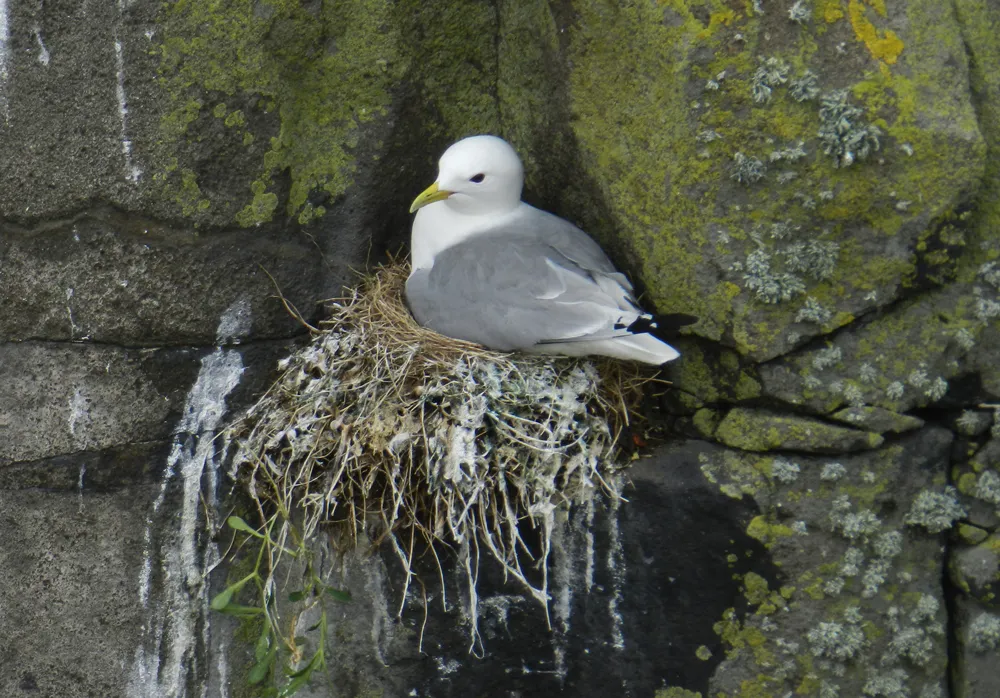Citation

Overview
This study used DNA metabarcoding on faeces collected opportunistically during the breeding season, to identify fish and marine invertebrate prey in the diet of Shag and Kittiwake in western Scotland.
In more detail
The UK is home to internationally important populations of seabirds, many of which are in decline. Understanding what seabirds eat is an important part of understanding these declines. For example, seabird diet during the breeding season can be closely linked to their breeding success. Despite the importance of identifying what seabirds eat, long-term diet studies are rare. In the UK most, long-term diet studies are undertaken by the Seabird Monitoring Programme (SMP) Key Sites with less frequent data collected outwith these colonies.
Typically, conventional diet monitoring involves visual observations of prey being delivered to chicks or collecting regurgitates/pellets. However, these methods require considerable time identifying prey items, and are biased towards specific prey, i.e. larger prey or those with indigestible hard parts (such as fish bones or crab claws). An alternative method that has successfully been used to identify the diet of a range of passerine and waterbird species, as well as seabirds such as Puffins and Storm Petrels, is looking for the DNA of prey species in faeces (through a process called DNA metabarcoding). By collecting fresh faeces, the DNA of ingested prey items can be identified to a higher taxonomic resolution than conventional methods. However, this approach has not yet been widely implemented. To see if DNA metabarcoding of opportunistically collected faeces could be a useful method for obtaining long-term, multi-colony diet data, this study used faeces collected from Kittiwakes and Shags during the breeding season from four locations along the west coast of Scotland. Specially, faeces were collected during routine ringing activities from Canna, the Treshnish Isles and Shiant Isles. On Colonsay, fresh faeces were collected from Kittiwakes roosting on a beach.
In total 45 Kittiwake and 43 Shag faecal samples were collected during the 2023 breeding season. From these fish prey DNA were successfully extracted from 76 (86%) samples, including sandeels, Atlantic Herring, European Sprats and cod species. Marine invertebrate prey DNA was also extracted from a small number of samples. From these data, the results confirmed diet differences between Kittiwakes and Shags on Canna and found significant differences in the species composition of fish in the diet of Kittiwakes from the two colonies with the largest sample sizes (Colonsay and Canna). The study also found that the main prey species detected in Kittiwake and Shag faeces from Canna matched those identified in dissected regurgitates and pellets collected during the same breeding season. Furthermore, DNA metabarcoding enabled prey identification to a higher taxonomic resolution, typically to species level, than from the regurgitates and pellets.
These results emphasise that DNA metabarcoding of faeces can be a non-invasive, practical and complimentary method to conventional diet monitoring, especially as opportunistically collecting faeces allows diet data to be collected from a greater range of seabird colonies including those which are logistically challenging to access. It also opens up the possibility of collecting seabird faeces from roosting individuals away from the breeding colony, and potentially outside the breeding season.
Abstract
Many seabird species are in decline, both globally and nationally, largely attributed to anthropogenic changes in the environment. Understanding the drivers of these declines requires detailed knowledge of population demographics and diet. However, long-term, multi-colony studies of seabird diet remain scarce. This study aimed to evaluate the feasibility of using DNA metabarcoding to obtain colony-level diet data from seabird faeces collected opportunistically during the breeding season.
We collected 45 Black-legged Kittiwake Rissa tridactyla and 43 European Shag Gulosus aristotelis faecal samples from four locations on the west coast of Scotland (Colonsay, Canna, the Treshnish Isles and the Shiant Isles). Prey DNA was successfully extracted from 76 (86%) samples, providing diet data for a region with limited diet monitoring. Across species and locations, we identified 20 prey fish taxa and nine likely invertebrate prey taxa, indicating that a broad range of prey was consumed. Sample sizes from Canna and Colonsay were sufficient to detect evidence for differences in diet composition of Kittiwakes between locations, and between Kittiwakes and Shags on Canna. DNA metabarcoding offers a non-invasive, practical, complimentary approach to conventional diet monitoring methods, reducing biases associated with visual identification of prey while enabling higher taxonomic resolution. Opportunistically collecting faeces also increases the capacity of obtaining spatially and temporally representative diet monitoring, even in logistically challenging locations. These findings demonstrate the use of faecal DNA metabarcoding for seabird diet monitoring and consequently its potential to inform effective management and conservation decisions.
Thanks to Mark Constantine for funding this project.

